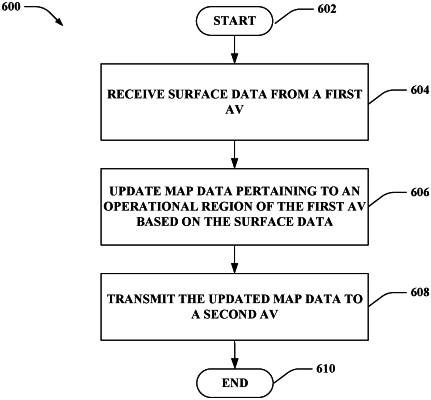| CPC B60W 30/18172 (2013.01) [B60W 10/18 (2013.01); B60W 10/20 (2013.01); B60W 40/06 (2013.01); G01C 21/3822 (2020.08); G01C 21/3841 (2020.08); G01C 21/3896 (2020.08); B60W 2520/105 (2013.01)] | 20 Claims |

|
1. An autonomous vehicle (AV), comprising:
a plurality of sensor systems that generate a plurality of sensor signals, the plurality of sensor signals indicative of a different vehicle in a driving environment of the AV, the different vehicle being separate from the AV in the driving environment of the AV; and
a computing system that is in communication with the plurality of sensor systems, wherein the computing system comprises:
a processor; and
memory that stores computer-executable instructions that, when executed by the processor, cause the processor to perform acts comprising:
generating, based upon the sensor signals, a plurality of position solutions for the different vehicle in the driving environment, the position solutions indicative of positions of the different vehicle over a period of time, the positions being included in a region in the driving environment in a forward path of the AV;
computing a magnitude of acceleration of the different vehicle observed by the AV in the forward path of the AV within the region in the driving environment during the period of time based upon the position solutions;
computing a coefficient of traction of a driving surface in the region based upon the computed magnitude of acceleration of the different vehicle observed by the AV in the forward path of the AV within the region, an object type classification of the different vehicle, and an approximate weight of the different vehicle corresponding to the object type classification of the different vehicle; and
controlling acceleration of the AV while the AV traverses the region based upon the computed coefficient of traction of the driving surface in the region computed based upon the computed magnitude of acceleration of the different vehicle observed by the AV in the forward path of the AV within the region.
|